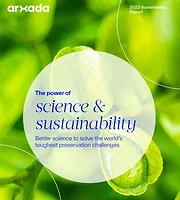ExxonMobil Publishes Surfactants Data that Support Product Development, Sustainability and Ecolabeling
SPRING, TX – ExxonMobil announced the publication of a series of studies aimed at helping formulators and manufacturers support new product development, sustainability product performance attributes and eco-labeling requirements. This body of work aggregates 30 years of data based on performance of ExxonMobil Exxal™ alcohols and their ethoxylates and was recently published in the peer-reviewed Journal of Surfactants and Detergents.
With the release of this data, manufacturers now have access to publicly available biodegradability and aquatic toxicity data needed for the proper regulatory classification of surfactants derived from Exxal branched alcohols. The researchers also demonstrated that when compared to linear or semi-linear counterparts, many of these branched alcohol ethoxylates were less toxic, have lower classification and labeling requirements under the United Nations’ Globally Harmonized System (GHS) of Classification and Labeling of Chemicals, and may qualify for environmentally friendly consumer labels.
“As regulations and consumer demands shift, there is an increasing need for aquatic toxicity data on surfactants,” Gail E. Bragin, a Senior Scientific Associate at ExxonMobil Biomedical Sciences and lead author on the paper, said. “Our goal was to make this data as openly and publicly available as possible so that surfactant producers, regulators and researchers can assess and make full use of it.”
In recent years, regulators and end users have become increasingly aware that some chemicals may persist in the environment, leading to efforts to regulate the use and release of such materials. The EU’s Safer Detergents Regulation and the U.S. Environmental Protection Agency’s Safer Choice and EU Ecolabel labeling programs require that surfactants demonstrate a fast rate of biodegradation.
The studies also confirmed that the Target Lipid Model is a useful tool to predict the toxicity of many branched and linear alcohol ethoxylates in surfactant mixtures, supporting the model’s use in assessing new alcohol ethoxylates and mixtures, which can reduce the need for costly environmental toxicity studies and shorten development cycles.
“We used the model in these studies to measure the effects on aquatic organisms, but it can do the same on sediment and soil organisms, providing a broader assessment of environmental risk,” said Bragin.
Click here to access this data.
Looking for a reprint of this article?
From high-res PDFs to custom plaques, order your copy today!





